
Hi there, gecko lovers! Chirag here, your friendly neighborhood reptile enthusiast. As a proud leopard gecko owner for over a decade, I’ve learned a thing or two about keeping these fascinating creatures happy and healthy. And let me tell you, nailing their diet is absolutely crucial.
When I first brought home my adorable leopard gecko, Ziggy, I was overwhelmed by all the conflicting information out there about what to feed him. Should I go with mealworms or crickets? How often should I dust his food with supplements? What about treats and variety?
Through trial and error (and a few regrettable Force-feedings early on—sorry, Ziggy!), I’ve figured out a balanced, nutritious diet that keeps my little buddy thriving. And today, I’m spilling all my hard-earned secrets to ensure your leopard gecko gets everything they need to live their best life.
So, grab your notebook and get ready to become a leopard gecko diet pro!
Common Leopard Gecko Diet Questions and Concerns
Before we dive into the nitty-gritty, let’s address some of the most common leopard gecko diet questions and concerns I’ve encountered over the years:
- “What should I feed my leopard gecko?”
- “How often should I feed them?”
- “Are there any foods I should avoid?”
- “How do I ensure they get enough nutrients?”
- “My gecko isn’t eating—what should I do?”
Don’t worry; we’ll tackle all of these (and more) as we go along. The key is understanding your gecko’s specific needs and listening to their cues. Every leopard gecko is a little different, but with the right knowledge and approach, you’ll have them chowing down on a well-balanced, delicious diet in no time.
The Staple Feeder Insects
Okay, let’s start with the bread and butter of any good leopard gecko diet: feeder insects.
Your little buddy is an insectivore, meaning they primarily eat insects and other invertebrates in the wild. Luckily, we’ve got a few staple options that make excellent, nutrient-rich meals for our captive leopard geckos.
Crickets
Ah, crickets—the classic gecko treat. These little hoppers are widely available and relatively easy to care for, making them a popular choice for many reptile owners.
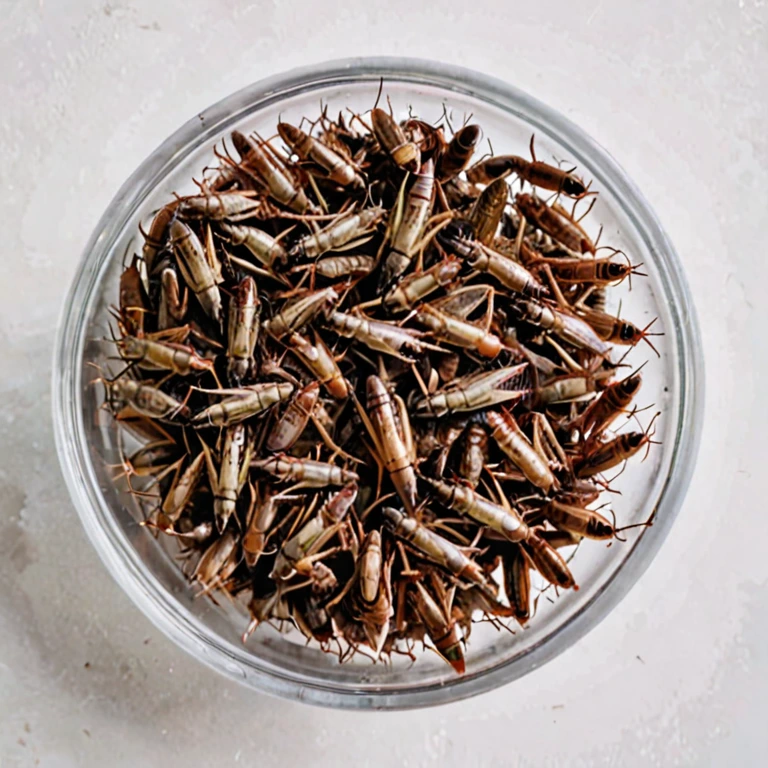
Pros of crickets
- Readily available at most pet stores
- Easy to gut-load (more on that later)
- Provide good nutrition when properly supplemented
Cons of crickets
- Can be noisy and smelly if not properly cared for
- May try to escape their enclosure
- Can potentially bite your gecko (though this is rare)
My top cricket tip: Buy them in appropriate sizes for your gecko. As a general rule, offer crickets that are no bigger than the space between your gecko’s eyes. This prevents any potential impaction or choking hazards.
Mealworms
Another staple in the leopard gecko diet, mealworms are easy to care for and generally well-accepted by most geckos.
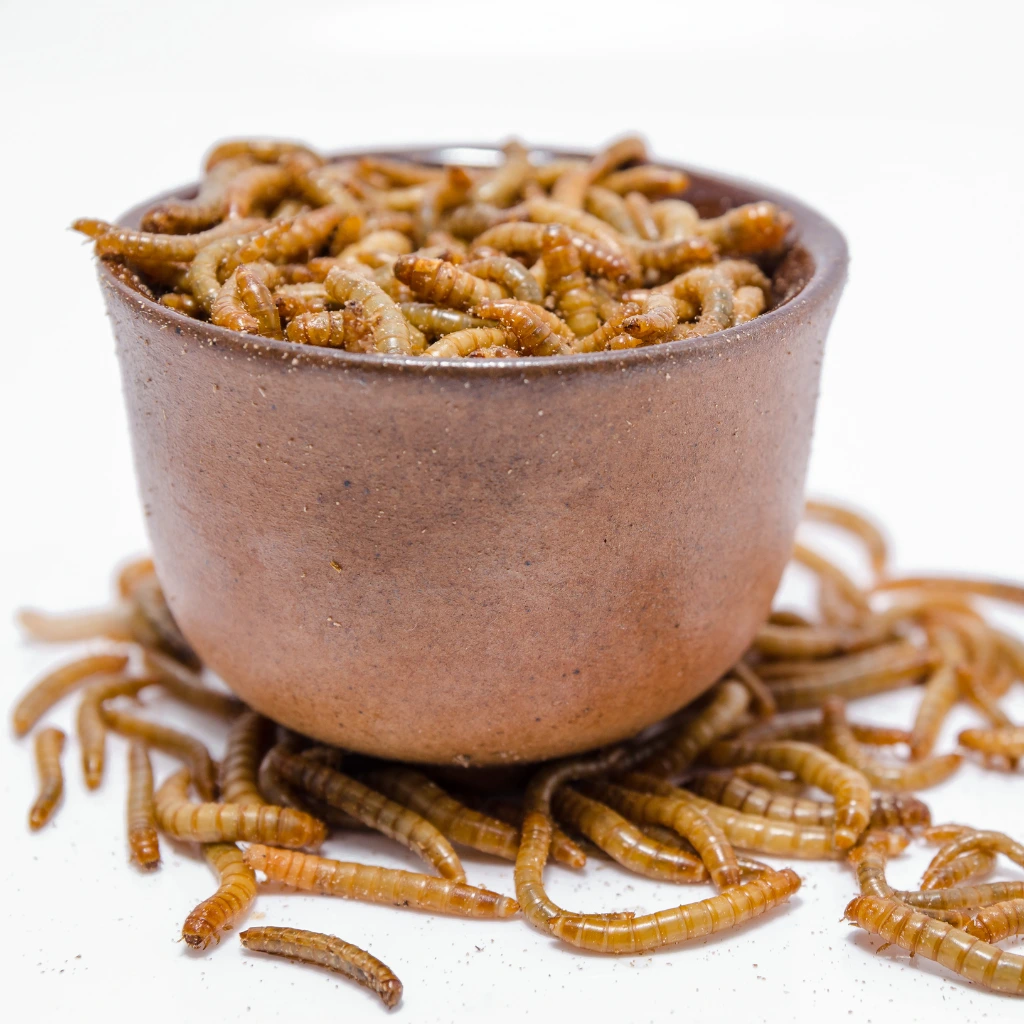
Pros of mealworms
- Relatively low-odor and low-maintenance
- Don’t try to escape like crickets
- Satisfying crunch for your gecko (I like to imagine they provide a nice textural contrast)
Cons of mealworms
- Can be harder to gut-load effectively
- Higher in fat and phosphorus, so should be fed in moderation
Pro tip: Try offering your gecko a varied diet of both crickets and mealworms. This mix keeps things interesting for your pet while ensuring they get a nice range of nutrients.
Dubia Roaches
Now, I know what you’re thinking: “Roaches? As feeders? No way, Chirag!”
Hear me out, though. Dubia roaches have been gaining a ton of popularity in the reptile community lately as a more nutritious, easier-to-manage feeder insect. And for good reason!
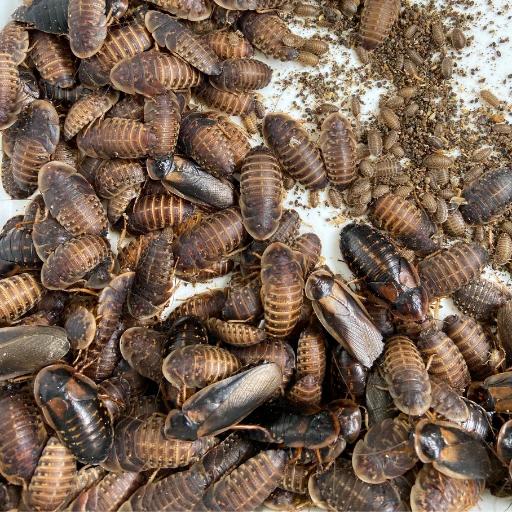
Pros of dubia roaches
- Can’t climb smooth surfaces, so they’re far less likely to escape than crickets
- Don’t make noise or have an off-putting odor when kept properly
- Relatively simple and inexpensive to breed your own colony
- Packed with nutrients like protein, calcium, and iron
Cons of dubia roaches
- Initial colony can be pricier to purchase
- Some owners are squicked out by feeding roaches (I get it, but promise they’re way less creepy than you’d think!)
- May be tougher for juvenile or smaller geckos to consume
While I still recommend a diet centered around crickets and mealworms, incorporating some dubia roaches can be a wonderful way to boost your gecko’s nutrition. Just be sure to buy appropriate sizes and maybe squint a little while serving them up—out of sight, out of mind, right?
Waxworms
Ah, the ever-popular waxworm. These stubby lil’ grubs are beloved as a tasty leopard gecko treat, and for good reason—geckos absolutely devour them!

The thing is, you’ll want to be really mindful about keeping waxworms as just an occasional indulgence, like a reptilian candy bar. Why? Because they’re crazy high in fat and fairly low in other nutrients.
Too many waxworms can potentially lead to obesity and other health issues. So while that smacking lip noise your gecko makes when housing a waxworm is downright adorable, don’t overdo it with these fatty snacks.
My waxworm protocol? Maybe once a week or every other week as a special treat. They’ll gobble them up happily while still getting the balanced nutrition they need from their staple feeders.
Earthworms
I’ll be honest—I avoided feeding earthworms (nightcrawlers) to Ziggy for years because…well, they kinda give me the heebie jeebies. But after tons of reptile owners raving about them, I finally caved and gave them a shot.
And you know what? The little guy LOVED them! Turns out, those humble earthworms make a pretty solid feeder option with some great benefits:
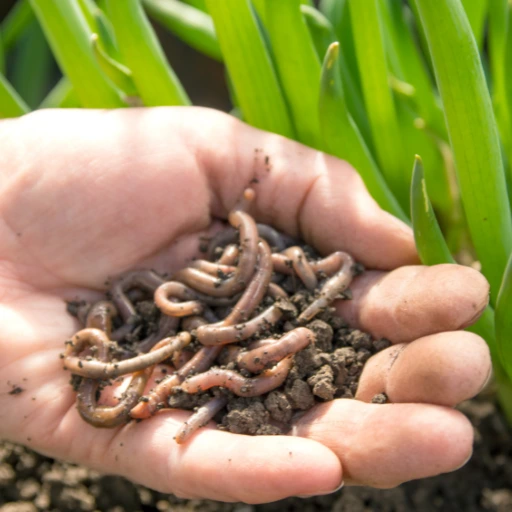
Pros of earthworms
- Excellent source of protein and other nutrients
- Can’t escape or make noise in the enclosure
- Fun for your gecko to “hunt” and mimic natural feeding behavior
Cons of earthworms
- Have to be cut up into gecko-sized portions (can get a bit messy)
- Require special storage and handling compared to dry feeders
- I’m still kinda creeped out by them, not gonna lie
So while I may not be an earthworm convert for life, I’ve come to appreciate keeping them in the rotation here and there. Ziggy clearly relishes the chance to really work for his meal and get in touch with his natural hunting instincts.
As always, be sure to vary your gecko’s diet—earthworms make a great supplement to crickets, mealworms, and the occasional dubia roach. It’s all about balance, variety, and finding what works best for your particular cold-blooded buddy.
Ants
Okay, I know this one might sound a little crazy at first, but bear with me: Ants can actually make a surprisingly great small treat for leopard geckos every once in a while!
Before you go scooping up those marching lines of ants from your kitchen floor, though, let me clarify: I’m talking about feeder ant species that are responsibly sourced and raised for consumption.
While you’ll definitely want to stick to staple feeders like crickets and mealworms for the bulk of your gecko’s diet, offering some ants on occasion can be really beneficial.
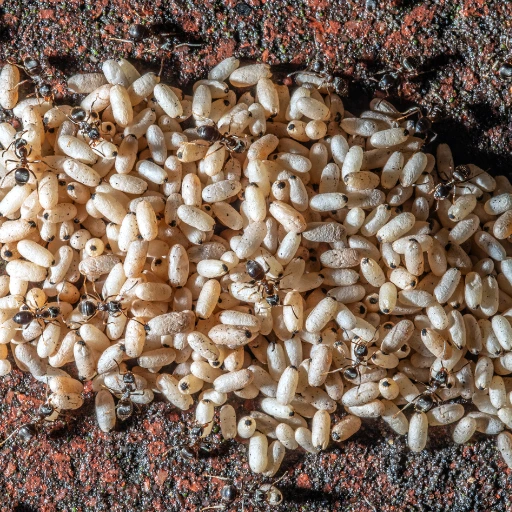
Pros of ants as feeders
- Small size is perfect for juvenile or modest eaters
- Often triple-fed with nutritious gut loads making them high in nutrients
- Can help encourage natural hunting behaviors
- Nice change of pace to keep your gecko excited at mealtime
Cons of ants as feeders
- Can be tricky to find them commercially available
- May try to swarm or escape their enclosure if not handled properly
- Need supplementation since they’re fairly small
My tip? See if you can find a reputable online supplier that offers ant colonies specifically for reptile feeding. It’s best to get them from a dedicated source rather than trying to capture wild ants.
Then, try offering a small number (5-10) of appropriately sized ants every week or two for your gecko. The quick movements will trigger their hunting instincts and the ants themselves provide a healthy, bite-sized treat when properly supplemented.
Just be sure to remove any uneaten ants after an hour or so to prevent potential escapes or swarming. With a little supervision, ants can make a fun, nutritious periodic change to your leopard gecko’s diet!
How Much and How Often?
This is one of the most common leopard gecko diet questions I get, and it makes sense—overfeeding can lead to obesity and other health issues, while underfeeding leaves your gecko malnourished and lethargic.
In general, here are some basic feeding guidelines for leopard geckos:
- Juveniles (up to 18 months old) should be fed every 1-2 days
- Adults should be fed every 2-3 days
- Offer an appropriate number of age-sized insects at each feeding (more on portions next)
But these are just guidelines. The reality is, every gecko is a little different. You’ll want to keep an eye on your pet’s body condition and adjust their portions accordingly.
A rough estimate? Juveniles can eat 5-7 insects per feeding, while adults may only need 6-8 insects every 2-3 days. But use these as starting points and let your gecko guide you. If they seem to still be hungry after clearing their bowl, offer a few more insects. If they’re leaving food behind or looking a little husky, cut back on the portions.
Pro feeding tip: Try to space feedings out and avoid overloading your gecko with more food than they can reasonably eat in one sitting. This helps prevent obesity and encourages natural hunting behaviors.
Variety and Treats
Okay, we’ve covered the staple feeder insects that should make up the bulk of your leopard gecko’s diet. But every animal needs a little variety and an occasional treat to keep things interesting, right?
For leopard geckos, that could mean:
Treats:
- Waxworms (high in fat, so feed sparingly)
- Small pieces of fresh fruit (no citrus)
- Butterworms
- Hornworms
- Grasshoppers (feed captive-bred to avoid pesticide exposure)
Variety:
- Rotate between appropriately-sized crickets and mealworms as staples
- Try offering non-insect prey occasionally (small pre-killed mice or anoles, for example)
I like to think of it this way: The core leopard gecko diet should be nutritious, balanced feeder insects. But every so often, you can mix in a fun “cheat day” treat or something a little different to keep your gecko excited about mealtime.
Just be sure to limit fatty treats like waxworms, as too many can lead to obesity and other health problems. Everything in moderation, gecko pals!
The Importance of Supplementation
Even the highest-quality feeder insects lack some of the crucial nutrients our leopard gecko friends need to truly thrive. That’s where supplementation comes in.
There are two main types of supplements you’ll want to use for your gecko:
Calcium + D3
This one’s critical for maintaining healthy bones and ensuring proper growth, especially for juveniles. Without enough calcium and vitamin D3, your gecko could develop metabolic bone disease—a progressively crippling condition.
I typically “dust” my leopard gecko’s insects with a calcium + D3 supplement once or twice a week. Look for a quality calcium powder made specifically for reptiles at your local pet store. One brand I’ve had great results with is Arcadia’s EarthPro CalciumPro—their Ultramix formula includes chelated minerals for optimal absorption.
Whatever supplement you choose, just be sure to get into a regular dusting routine. Those little gecko bones need all the calcium and D3 they can get to develop properly and stay strong.
Multivitamin
In addition to calcium, leopard geckos need a range of other key vitamins and minerals for overall health. This is where a multivitamin supplement comes in handy. One excellent option is the Rep-Cal Herptivite Multivitamin with Beta Carotene – it provides a fortified vitamin and amino acid blend perfect for reptiles.
Aim to dust your leopard gecko’s insects with a reptile multivitamin like Herptivite once or twice a month. Not every single feeding needs supplements, but a regular schedule helps ensure they get all the micros they need.
Pro supplementation tip: Alternate between calcium + D3 and multivitamin, dusting insects one feeding, then the other supplement at the next feeding. This helps prevent over-supplementation while covering all their nutritional bases.
What About Gut Loading?
In addition to supplementing our leopard geckos directly, we can also “gut load” their feeder insects to pack them with extra nutrients.
What is gut loading? Basically, it’s the practice of feeding nutrient-rich foods to feeder insects before offering them to your gecko. As the insects eat these gut load foods, their bodies absorb the nutrients—passing them on to your leopard gecko when eaten.
Some great gut load options for crickets and mealworms include fresh veggies (carrots, sweet potatoes, leafy greens), grains (oats, wheat germ), and quality dry pet food. Nature Zone’s Water Bites for Feeder Insects are an excellent all-in-one gut load option packed with vitamins, proteins, and moisture.
By gut loading for at least 24-48 hours before feeding them to your gecko, you’re essentially pre-supplementing those insects to make them more nutritious meals.
My top gut loading tip: Don’t just rely on potato chunks from the pet store. Offer your feeder insects a varied, nutrient-dense gut load like the Water Bites. This further optimizes their value as a food source for your gecko.
*FYI, I may earn a small commission if you click on some of the links in this post.
Hydration Is Key
We can’t talk about a complete leopard gecko diet without addressing proper hydration. These little lizards can actually go into a state of drought dormancy when lacking adequate moisture.

To prevent dehydration, be sure to provide a shallow water dish in your leopard gecko’s enclosure. Use a heavy ceramic bowl or dish that can’t be easily tipped over. Change and clean it regularly to prevent bacteria buildup.
You may also find that lightly misting the enclosure with a spray bottle (avoiding any direct spray at your gecko) can help maintain good humidity levels and allow your pet to drink water droplets.
Listen to Your Gecko
At the end of the day, the most important thing is listening to your individual leopard gecko and catering their diet to their specific needs and preferences.
If they seem “off” their food or start losing weight, don’t be afraid to make adjustments. Increase portions, try new feeder insects, or take them to an experienced reptile vet if needed.
Each gecko is unique. By observing their behavior, body condition, and hunger cues, you can fine-tune their diet for optimal health and happiness.
Personal Story: When Ziggy Hit a Rough Patch
Speaking of listening to your gecko, I want to share a personal story about when I had to really tune into Ziggy’s needs a few years back.
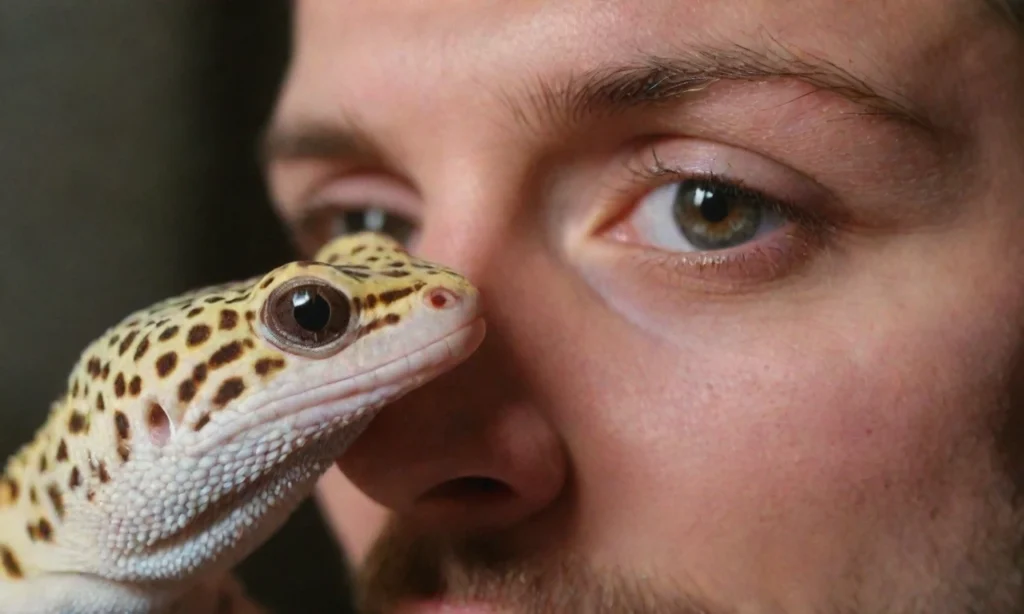
He went through a phase where he stopped eating and started losing weight rapidly. I was so worried! I tried all the usual tricks—different insects, warming his enclosure, leaving him alone for a bit. Nothing worked.
Finally, I took him to my trusty reptile vet, fearing the worst. After some tests, the vet reassured me that ziggy was just being…well, a male leopard gecko during breeding season.
Apparently, many males can go off their food and become more lethargic in an effort to conserve energy for mating. Once I knew this was a natural process he was going through, I relaxed a bit.
The vet’s advice? Leave him be, offer appropriately-sized insects in small portions every few days, and let nature run its course. Sure enough, after several weeks, ziggy’s appetite returned and he was back to his normal, hungry self.
It just shows you how important it is to really listen to your gecko’s needs—not just in terms of diet, but their whole environmental and health situation. With some care and attention, I was able to get ziggy back on track.
Wrapping Up: A Balanced Diet for a Happy, Healthy Gecko
Well, there you have it, gecko fam—my complete, hard-earned guide to nailing your leopard gecko’s diet. We covered:
- Staple feeder insects (crickets and mealworms,.)
- Appropriate feeding schedules and portions
- The importance of variety and occasional treats
- Using calcium, multivitamin, and gut loading for optimal nutrition
- Hydration needs
- Listening to your individual gecko’s cues
Feeling overwhelmed? Don’t be! Once you get into a routine, maintaining a balanced, nutrient-rich diet for your leopard gecko gets easier. The key is starting with high-quality staple insects and supplementing appropriately.
From there, it’s all about tuning into your pet’s specific needs through observation. Adjust as needed based on their hunger levels, growth rate, and energy. And don’t be afraid to consult experienced reptile vets or other gecko owners in your local community!
With some practice and patience, you’ll soon have your leopard gecko dialed in and thriving on a feeding regimen tailored just for them. These quirky little lizards make such rewarding pets, and proper nutrition is the first step to building a strong, lifelong bond.
So keep persevering, my gecko-loving friend! Your scaly companion is counting on you to make sure they’re getting everything their body needs. Trust me, nailing their diet and seeing them flourish makes all the effort worth it.
Here’s to many more years of good health, great nutrition, and gobbled-up insects for our beloved leopard geckos!
Want to share your own leopard gecko diet tips? I’d love to hear them! Drop a comment below or share this post if you found it helpful.
Until next time, scale baby scale!
FAQ
Disclaimer: This article contains affiliate links, which means if you purchase a product through one of these links, I may receive a small commission at no extra cost to you. Rest assured, I only recommend products that I’ve personally used and believe in. Any commissions help support the free content on this website.
